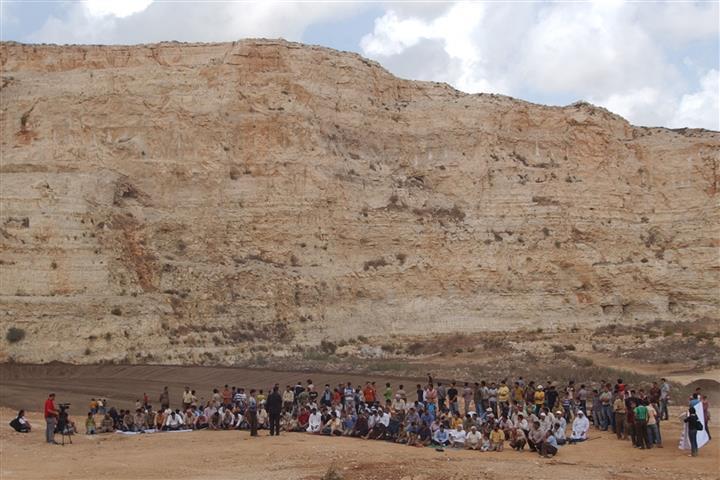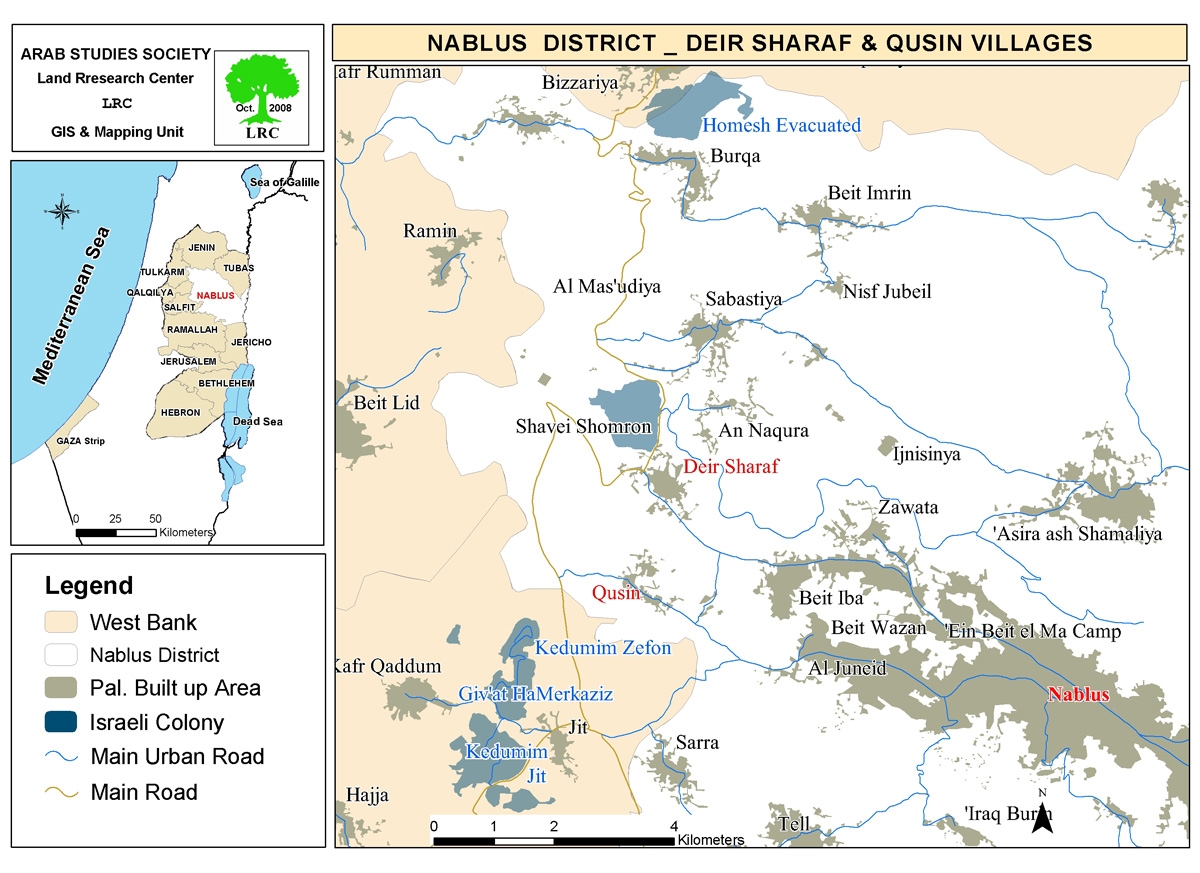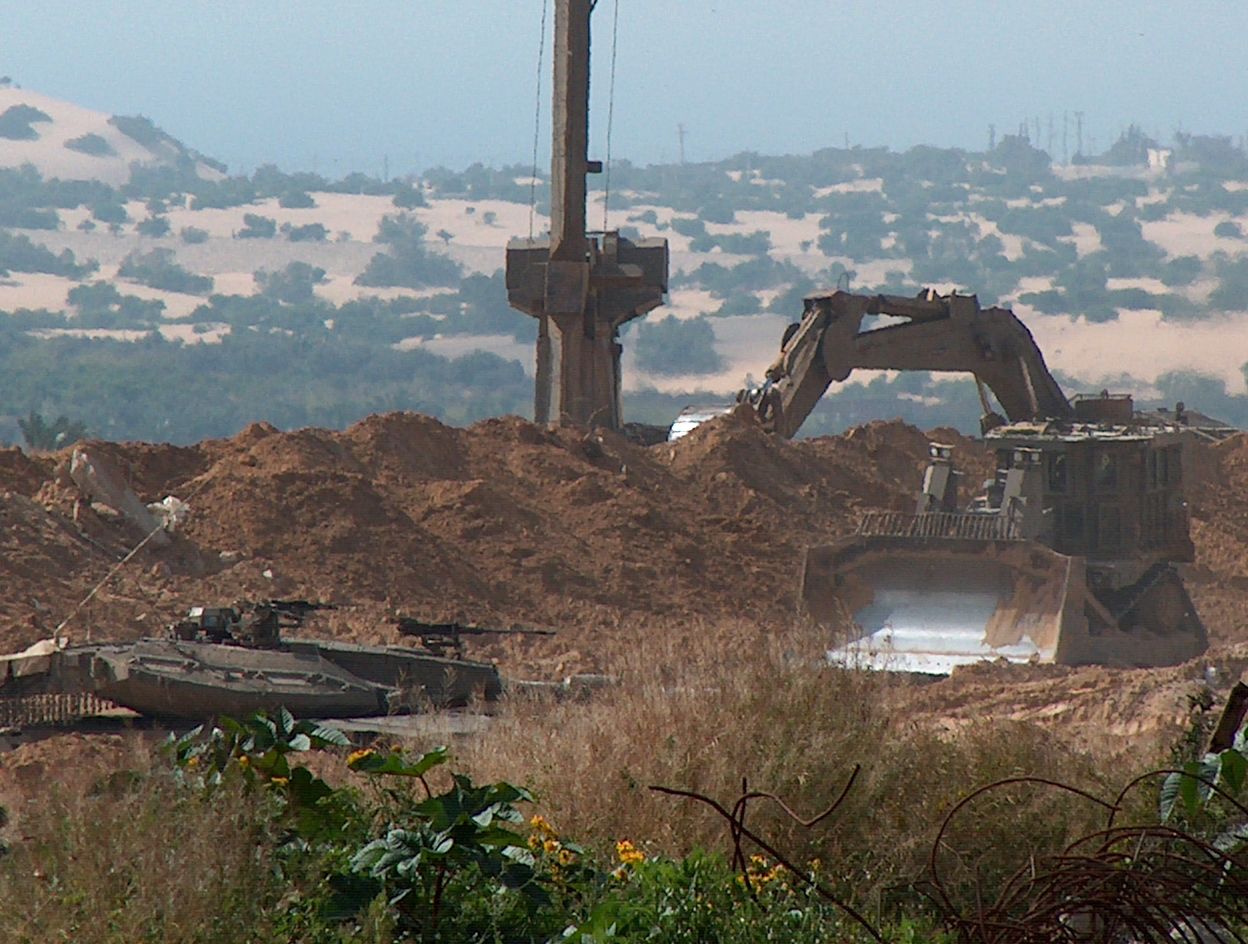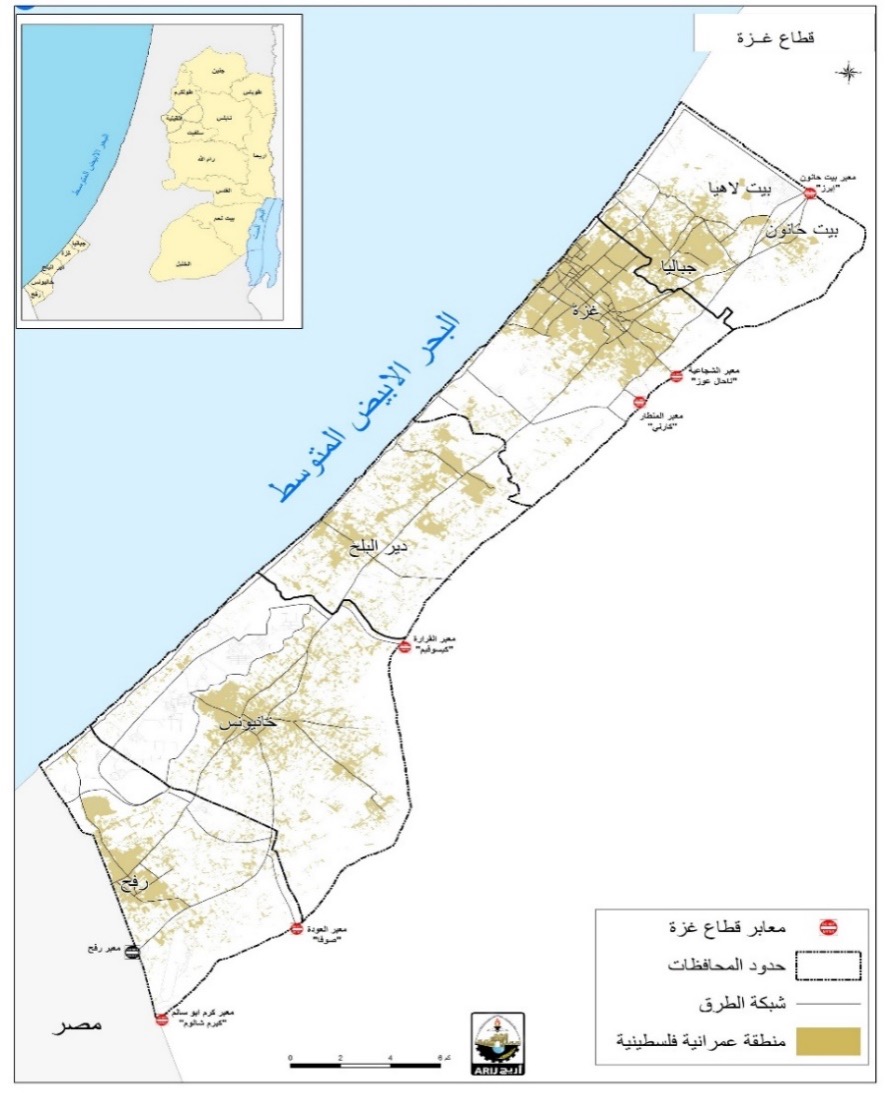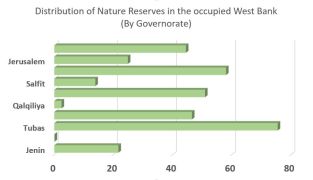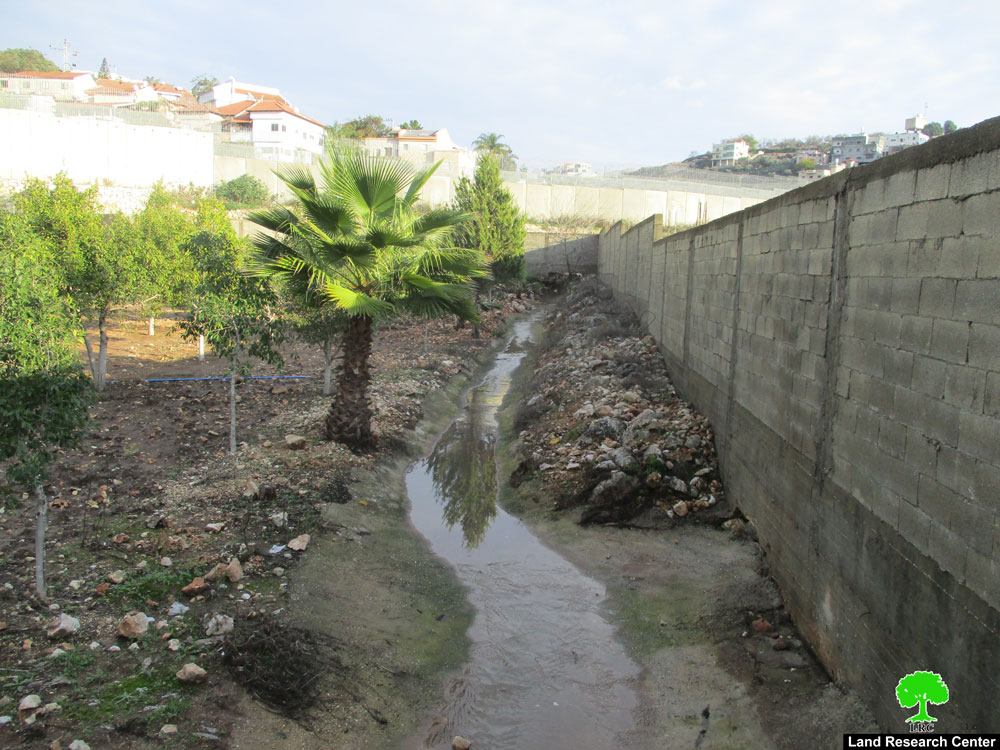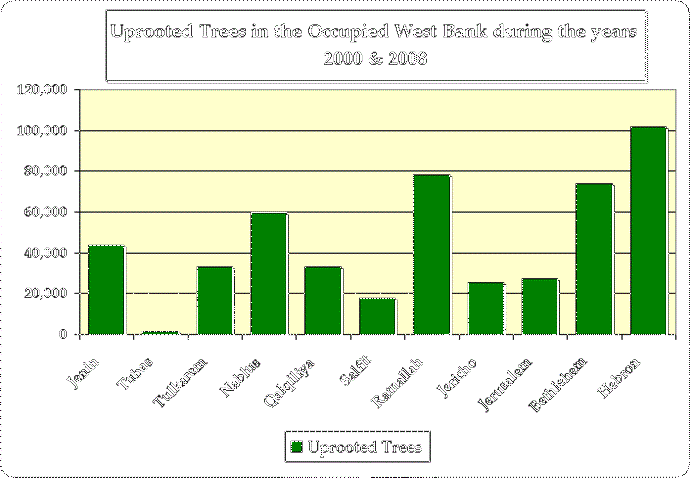The hills of Deir Sharaf and Qoseen are considered to be a symbol of nature's beauty and generosity in Palestine. The two hills, however, are currently facing a dark future due to the intention of Israeli occupation authorities to transform of 180 agricultural dunums of its lands to a dump site for Israeli solid waste and garbage.
The targeting of the region started in 2002 in aftermath of the re-occupation of the West Bank, including Nablus Governorate, during the so-called 'Defensive Shield' Israeli military operation. During the operation Israeli occupation forces raided the quarry of Abu Shosha, confiscated the bulldozer and other equipment while throwing the workers out under the pretext that the quarry did not have a 'working permit.' That was carried out despite the fact that the quarry was present since 1984.
Photo 1: Qoseen villagers and international activists participating in a peaceful sit-in on lands
threatened to be transformed into solid waste dumping site by the Israeli Occupation Forces.
Since the Operation, quarry owners and workers were prevented from reaching the location. Israeli occupation forces took advantage of that fact and facilitated the transportation of tons of solid waste from the nearby Qadomim colony and its associated industrial zone and dumped it in the quarry. The owners of the quarry, in reaction, submitted official complaints to the Governor of Nablus, Nablus mayor, the Palestinian DCL and the Israeli DCL in Bet El. The pressure bore fruit as Israeli trucks stopped its dumping practices for a period of one year. However, the dumping was started again as solid waste-loaded trucks began coming to the site at night to dump it dreadful cargo on quarry lands.
The quarry owners filed a complaint to the Israeli High Court for it to issue a Stop Work measure and to prove their ownership of the land while asking for financial compensation for damages. So far, no reply was provided from the Court. However, in September 2008 occupation authorities published in the Israeli newspapers a plan to confiscate 180 dunums in the two hills with the explicit goal of using the lands as a dumping site for solid waste. About two weeks ago, Israeli occupation bulldozers started introductory work for laying the basic infrastructure for the site.
In case occupation forces continued their work, the dumping site will have an utmost negative effect on the whole region as its establishment will lead to the following:
1. The contamination of groundwater and the main water well that provides water for the village of Qoseen and nearby villages. The water well (capacity of 4,000 cubes daily) is located only 250 meters away from the proposed site of the dump. Given the fact that most of the dumped materials are not treated and some has poisonous material, it is bound to seep into the groundwater and, thus, causing its pollution. Moreover, the dumpsite is expected to pollute additional 5 main wells located 700 meters away from the proposed dumping site. One of these wells is the Nablus well which provides water to all of the City of Nablus's 150,000 residents. Two additional wells provide water to the village of Deir Sharaf while the reaming two wells provide water to the 3,000 residents of the village of Beit Eiba.
2. The expected diseases caused by the gases stemming from the proposed dumpsite. Palestinian Ministry of Health's studies about the effects of similar sites indicated a marked increase in cases of cancer.
3. The site is located only about 500 away from the village of Deir Sharaf. Some houses are located as close as 200 meters to the site which magnifies their risks.
Mr. Adnan Mustafa abu Salah from the village of Deir Sharaf, one of the affected Palestinians by the dumping site, indicated the following to Land Research Center's field researcher: ' My house is only few hundred meters away from the dumpsite. All members of my family had respiratory problems when the dumping started 3 years ago. We weren't able to sleep at night due to the awful odor stemming from it. We are afraid to get cancer especially that we already have 4 people from our village who died after being diagnosed with this disease, something that was unheard of before the dumping started.'
General Information about the Village of Deir Sharaf:
The village is located 8 kilometers west of the city of Nablus on the Nablus-Jenin-Tul Karem junction. The surface area of the village is about 9,000 dunums. The area is surrounded from the east by the village of Beit Eiba, from the west by the villages of Beit Lid and Ramin, from the north by the village of Sabastiya and from the south the village of Qoseen.
A great hill, called Deir Sharaf Hill, is located west of the village. Farmers of the village used to use it to plant barley, wheat and other crops. Yet, Israeli occupation forces foreclosed the entire area after it declared it to be a Closed Military Zone since the beginning of the current Intifada. Farming in the area is virtually non-existing except for those few farmers who would take a risk and sneak into the hill to farm their lands.
Deir Sharaf is considered to be one of the richest areas in the West Bank in water as it contains two big water wells that provides the village as well as the city of Nablus with large quantities of water.
It is worth pointing out here that the Israeli government is claiming that it has decided to prevent Israeli from throwing their waste (solid and otherwise) into Palestinian lands in the West Bank estimated at 1,000 tons in daily basis. It must be made clear that such prohibition is only on waste coming from inside of Israel which does NOT include waste coming from Israeli colonies built atop Palestinian lands (as is the case in Deir Sharaf Hill).
Prepared by:
The Land Research Center
LRC


